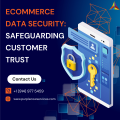In this blog, we will explore the key steps and best practices to protect your eCommerce store from unauthorized access, data breaches, and other security risks. By implementing these essential measures, you can safeguard your customers’ information, maintain trust, and ensure the long-term success of your online business.
Store Monitoring and Security Best Practices
Secure Website Development
Implement Secure Coding Practices:
Adhere to secure coding guidelines to reduce vulnerabilities, such as cross-site scripting (XSS) or SQL injection attacks.
Regularly Update and Patch Software:
Keep your website’s content management system (CMS), plugins, and themes up to date with the latest security patches to address any known vulnerabilities.
Use SSL/TLS Certificates:
Encrypt data transmission between your eCommerce store and customers by implementing SSL/TLS certificates. This guarantees secure communication and safeguards confidential data.
Access Control and User Management
Strong Password Policies:
Enforce password complexity rules, such as minimum length, the inclusion of uppercase and lowercase letters, numbers, and special characters. Encourage regular password updates.
Two-Factor Authentication (2FA):
Implement 2FA to add an extra layer of security. Users will be required to provide a secondary verification method, such as a unique code generated on their mobile device, in addition to their password.
Role-Based Access Control (RBAC):
Assign appropriate roles and permissions to users based on their responsibilities. Limit access to sensitive areas of your eCommerce store to authorized personnel only.
Regular Backups and Disaster Recovery
Automated Backups:
Set up automated backups of your eCommerce store’s files and databases on a regular basis. Store the backups in secure, off-site locations to ensure data recovery in case of system failures or attacks.
Test Data Restoration:
Regularly test the restoration process to verify that backups are functioning correctly and that your eCommerce store can be quickly restored to a functional state if needed.
Disaster Recovery Plan:
Develop a comprehensive disaster recovery plan that outlines the steps to be taken in case of a security breach, data loss, or other catastrophic events. This plan should include the roles and responsibilities of key personnel and the necessary communication channels.
Website Monitoring and Intrusion Detection
Web Application Firewalls (WAF):
Implement a WAF to protect your eCommerce store from common web application attacks, such as SQL injection or cross-site scripting. A WAF analyzes incoming traffic and filters out potentially malicious requests.
Continuous Security Monitoring:
Utilize security monitoring tools to detect and alert you of any potential security breaches, unauthorized access attempts, or suspicious activities on your eCommerce store.
Intrusion Detection and Prevention Systems (IDPS):
Deploy IDPS solutions to monitor network traffic and detect and prevent any unauthorized attempts to access your eCommerce store’s network or systems.
Educating and Training Employees
Security Awareness Training:
Educate your employees about common security risks, such as phishing emails or social engineering attacks. Train them to identify and report potential threats to prevent security breaches.
Regular Policy Review:
Establish clear security policies and guidelines for employees to follow. Regularly review and update these policies to address new security threats and changes in technology.
Incident Response Training:
Conduct regular incident response drills and training sessions to ensure that employees know how to respond effectively in the event of a security incident or breach.
Conclusion
Protecting your eCommerce store is not a one-time effort but an ongoing commitment. By implementing the essential store monitoring and security measures outlined in this blog, you can significantly reduce the risk of data breaches, unauthorized access, and other security threats. Remember to stay up to date with the latest security practices, educate your employees, and regularly monitor and test your eCommerce store’s security defenses. By prioritizing security, you can provide a safe and secure environment for your customers, build trust, and ensure the long-term success of your eCommerce business.
Introducing Purple Cow’s Security Solutions: Safeguard your eCommerce store with our comprehensive monitoring and security measures. Protect customer data, prevent unauthorized access, and ensure a secure environment for your online business. With robust security practices, regular monitoring, and employee training, Purple Cow is your trusted partner in eCommerce security. Don’t let security risks hold you back – stand out from the competition with Purple Cow’s top-notch security solutions.














